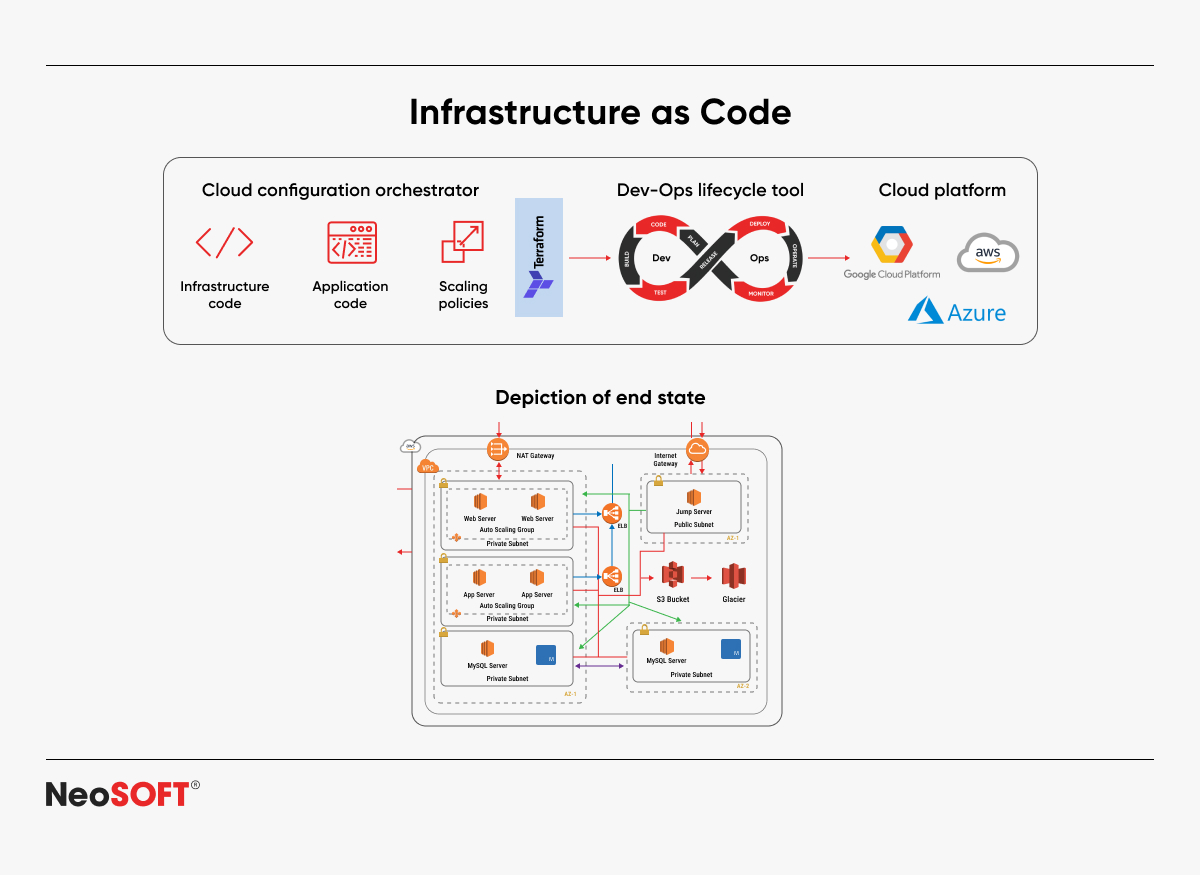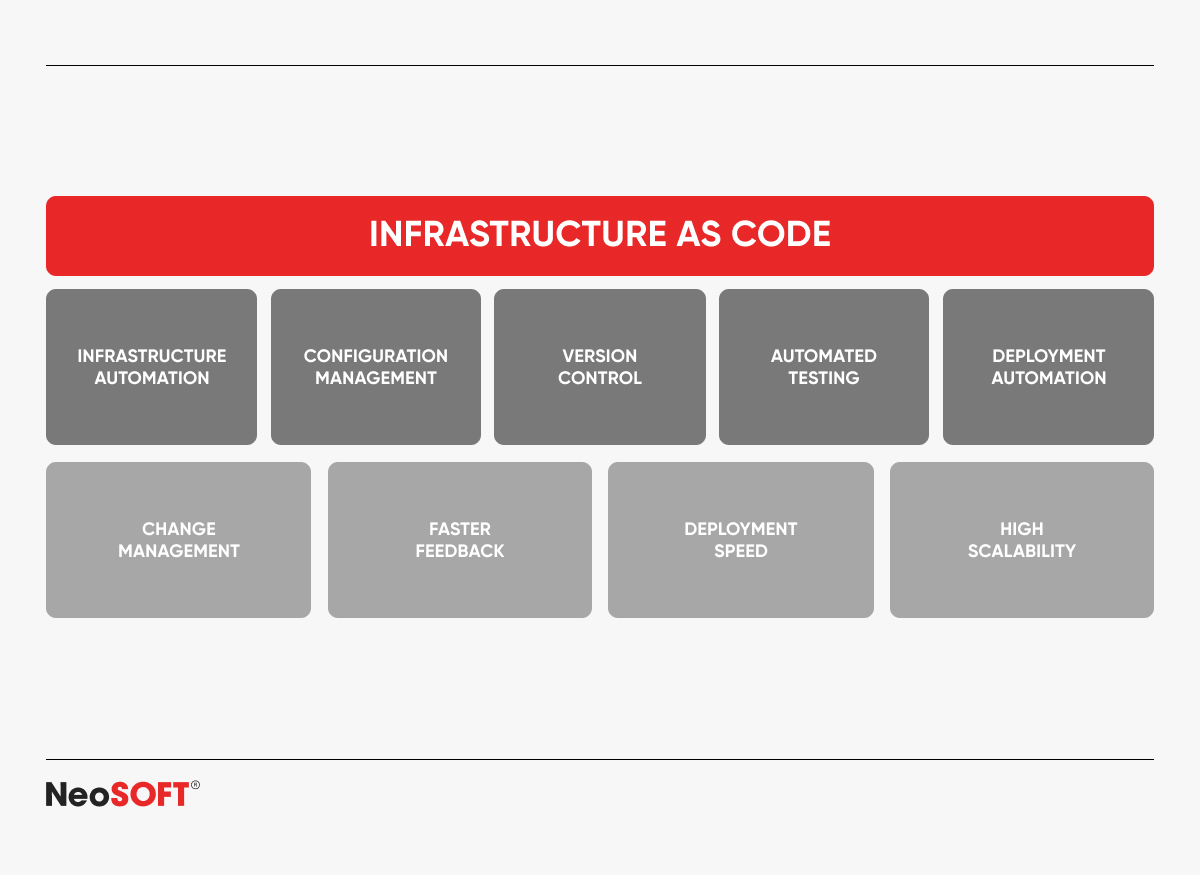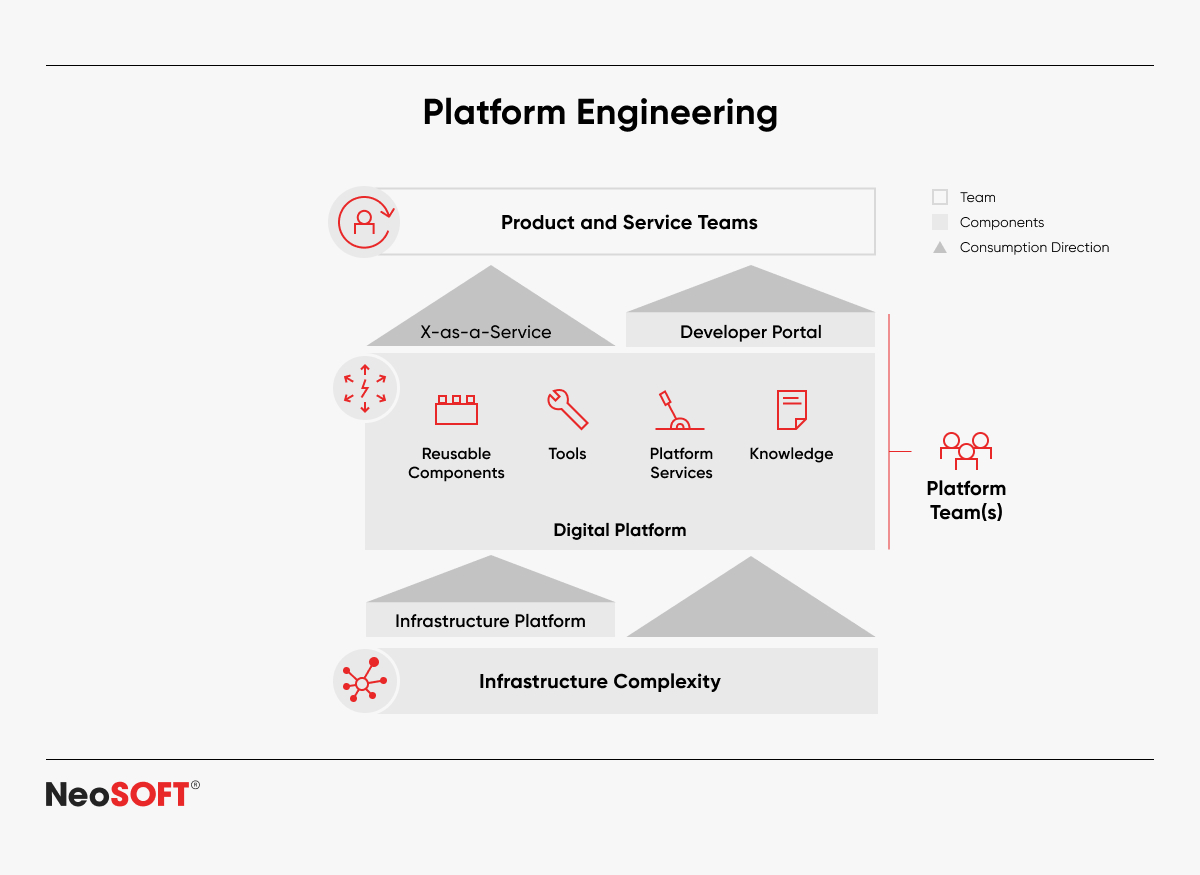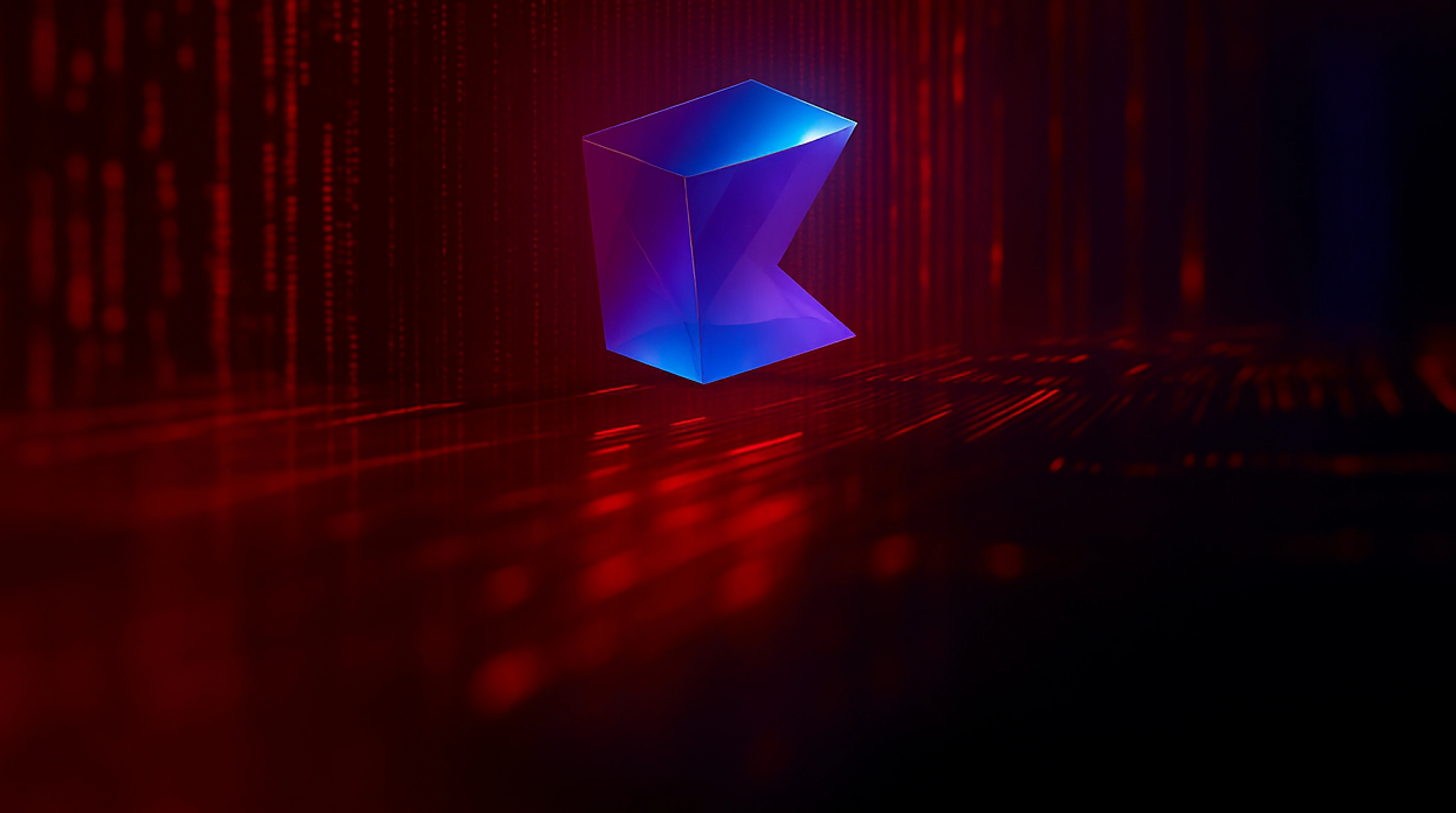How Infrastructure As Code Is Transforming Platform Engineering
April 2, 2024
The Current Setup for Building Platforms
Picture this: A software development team working on an important new project is struggling with its manual infrastructure.
Establishing and managing manual infrastructure for both hardware and software components, ensuring seamless operation of each tool individually and collectively, is a labor-intensive process susceptible to human error.
Considering the time needed to maintain their manual infrastructure, the team barely makes any headway on their project.
If this keeps up, tasks will not be completed on time, clients will be dissatisfied, and the team and the company’s reputation will suffer. Clearly, manual configuration is not the way to go. Then what is?
Enter Platform Engineering. With roots in DevOps, platform engineering is an emerging trend in software development. It involves creating infrastructure management components (servers, networks, databases, APIs, and other development tools and systems) that enable software engineering teams like the ones in the example above to manage their development process efficiently.
Put simply, platform engineering is the practice of designing, building, and maintaining the foundational infrastructure that forms the basis of the process of creating web applications.
Traditionally, DevOps emphasizes the breaking down of silos between the development and operations teams, increasing collaboration and automating any manual processes to speed up application delivery.
While this imperative approach has significant benefits, platform engineering takes it one step further by empowering software developers, streamlining workflows, and providing a self-service infrastructure platform.
Platform engineering has proven particularly valuable in DevOps architectures and cloud-based computing. The main focus of platform engineering is to improve the developer experience, automate infrastructure, enable self-service capabilities, and drive automation throughout the software development lifecycle.
A central component of this movement is Infrastructure as Code (IaC).
Platform Engineering Best Practices
Platform engineering refers to those configuration management tools that enable developers to design, create, and execute services and applications more efficiently.
It is a holistic approach to developing and maintaining the desired infrastructure and technology stack to deliver scalable and dependable software solutions.
Let’s explore the key components and benefits of platform engineering:
Infrastructure Design and Provisioning: Platform engineers build the basal infrastructure to host applications that require scalable and affordable systems. This underlying infrastructure can be built on-site, in the cloud, or a combination of both, depending on the particular requirements of the project.
Automation and Orchestration: An essential part of platform engineering, automation enables development teams to program repeated processes – like managing configuration, deploying apps, and supplying infrastructure – to perform without needing any manual intervention. Kubernetes and other orchestration solutions facilitate the coordination of intricate activities and guarantee uniformity across a wide range of environments.
Containerization and Microservices: Platform engineers combine applications into lightweight, mobile components using container orchestration platforms like Kubernetes and containerization tools like Docker. By dividing large and complex applications into smaller, manageable, and independently deployable services, microservices architecture can increase agility even further.
Infrastructure as Code: IaC is a fundamental technique in platform engineering that uses code rather than manual procedures to automate the creation, maintenance, and description of infrastructure settings. Platform engineers and development teams can accomplish version control and replicability by handling the infrastructure needs with tools like Terraform, CloudFormation, and/or Ansible.
Continuous Integration (CI) and Continuous Deployment (CD): Platform engineering builds CI/CD pipelines to automate code change integrations, tests, and deployments. These procedures are called continuous deployment (CD) and continuous integration (CI). This procedure makes distribution quick, effective, and reliable.
Developer Experience (DevEx): Platform engineers can empower the team and improve the development experience by providing practical self-service tools, easy documentation, and continuous support. Individual developers and teams can provision resources, deploy applications, and access development environments quickly, allowing them to focus on writing code and delivering the highest-quality output possible.
Security and Compliance: Engineers apply robust security measures to protect the infrastructure and applications from potential security threats. They establish access controls, encrypt data, and implement security best practices. Additionally, engineers ensure that all relevant laws and security rules are followed.
Logging, Monitoring, and Analytics: Platform engineers use logging and monitoring technologies to oversee the functionality, performance, and general health of applications and infrastructure components. By examining the recorded data, they can address any possible security or functional issues, learn important lessons about the system’s behavior, and boost performance if and when there are delays.
Thus, platform engineering is a comprehensive software development practice with many aspects. By adopting these practices, companies can build robust, efficient, and secure development pipelines that enable them to innovate and provide high-value products to clients and customers faster than ever before.
IaC: Driving Platform Engineering Automation
Infrastructure as Code, or IaC for short, is a practice in IT services and software development wherein infrastructure is managed through source code rather than manually configuring physical hardware devices or using interactive configuration tools.
IaC allows one to define the desired state of their infrastructure using source code and configuration files or scripts, along with tools to provision and manage that infrastructure automation.
IaC resources allow for version control, collaboration, and automation. This approach to infrastructure consistency eliminates the possible errors and security vulnerabilities accompanying manual processes and enables consistent and replicable deployments across many environments.
Treating infrastructure as code enables organizations to enforce best industry practices, ensure regulatory compliance, and adapt to ever-changing business requirements efficiently.
Some core principles of IaC are:
1. Declarative Configuration: Infrastructure is defined as the desired state, simplifying management by abstracting implementation details. This method enables an easier understanding of the infrastructure’s intended state and facilitates automated deployment processes.
2. Automation: Automation lowers errors, boosts productivity, and expedites deployment procedures by handling tasks like provisioning and configuration. Platform engineers may concentrate on higher-value and higher-impact tasks because automation makes deployments reliable and repeatable.
3. Version Control: Infrastructure code is versioned using tools like Git, which facilitates collaboration, tracking changes, and, when needed, rolling back to earlier versions. Version control maintains accountability, fosters teamwork, and gives an audit trail of modifications.
4. Idempotence: Idempotence is the scientific and mathematical property of repeated operations yielding the same results. Repeated configuration applications thus give rise to the same outcome, ensuring predictability and consistency in infrastructure deployments. This reduces the risk of unintended consequences and ensures that infrastructure remains as desired despite repetition.
5. Reusability: IaC components and templates are modular and reusable across projects and environments, fostering consistency and minimizing redundant effort. Reusable infrastructure components save time and effort, improving infrastructure management efficiency.
6. Scalability: IaC optimizes resource allocation while dynamically adapting to shifting workload demands through automation and cloud-native services. By ensuring that it can handle increasing loads without requiring manual intervention, scalability guarantees that the infrastructure can respond to shifting business needs with flexibility and agility.
Critical Considerations for Implementing IaC in Platform Engineering
Selecting the IaC tools that are most appropriate for the particular needs of each project is one of the most crucial factors in platform engineering. Given below are summaries of just a few of the available IaC tools developers can choose from:
1. Terraform, a widely used infrastructure management tool, enables the creation of Infrastructure as a Service (IaaS) with simple and readily understandable configuration files.
Owing to its modular architecture, it is able to support a myriad of cloud providers and services, making it a versatile tool capable of handling even the most complex infrastructure deployments.
Terraform’s state management capabilities enable the tracking and administration of infrastructure modifications. Its rich documentation and vibrant community have also proven to be helpful resources.
2. Ansible is an easy platform for infrastructure control since it provides a straightforward, agentless automation method, making it perfect for beginners.
Ansible’s simple YAML-based configuration files make it a popular tool for automating repetitive operations and configuration management in various situations and architectures. Ansible’s large module library guarantees consistent and dependable results while offering flexibility and scalability for various use cases.
Ansible is one of the most alluring Infrastructure as a Service (IaC) solutions for businesses wishing to optimize their infrastructure management process because of its emphasis on usability and simplicity.
3. WS CloudFormation, a native IaC service specifically created to handle AWS resources, offers a consistent method for managing resources across AWS services by allowing customers to define and provision AWS infrastructure using JSON or Y-AML templates.
Infrastructure deployment can be done securely and seamlessly thanks to CloudFormation’s connectivity with other AWS services like CloudTrail for audit recording and IAM for access management.
Its support for versioning and rollback enables reliable infrastructure management practices, and its ability to manage stacks and handle dependencies streamlines the management of complicated infrastructure deployments.
The Future of Platform Engineering and IaC
With businesses adopting cloud-native architectures and DevOps methodologies, platform engineering and Infrastructure as a Service (IaC) play more important and dynamic roles.
By following and embracing current trends, organizations may increase the effectiveness, safety, and scalability of their infrastructure settings and meet the needs of modern application development and deployment.
Let’s explore IaC’s disruptive potential and how it will affect general platform engineering and software development in the future.
Recently, there has been a discernible shift toward declarative infrastructure, such as Code (IaC), aided by tools like Ansible and Terraform. Declarative languages offer a more readable and natural definition of infrastructure configurations than imperative approaches.
Declarative approaches to Infrastructure as a Service (Iaas) simplify the management of immutable infrastructure and minimize configuration drift by articulating the desired state of the infrastructure rather than outlining the procedures required to attain it.
This approach is becoming increasingly popular as businesses realize the importance of clear and maintainable infrastructure management procedures that boost productivity and simplify platform engineering operations.
With cloud computing becoming increasingly popular, it’s critical to make effective use of Infrastructure as a Service (IaaS) offerings from cloud providers. Optimizing expenses and enhancing agility can be achieved by integrating IaaS capabilities to automate the provisioning, scaling, management, and maintenance of computing and infrastructure resources.
Platform engineers and operations teams may effectively install and manage infrastructure resources while minimizing operational overhead by utilizing the scalability and flexibility of cloud-native solutions.
This trend emphasizes the need to connect infrastructure management methods with cloud provider capabilities and emphasizes the shift toward cloud-native architectures.
Integrating Artificial Intelligence (AI) and Machine Learning (ML) technologies is altering infrastructure management practices, offering new opportunities for intelligent automation and optimization of software code.
AI/ML-driven insights enable platform engineers to analyze expansive data, predict potential infrastructure issues, and optimize resource utilization in real time.
In platform engineering, there’s an increasing recognition of the transformative potential of AI/ML. Organizations leverage AI/ML to automate routine tasks, improve system performance, and enhance overall resilience and infrastructure.
As we can see, Infrastructure as Code (IaC) is positioned and continues to evolve as a transformative paradigm in Platform Engineering. By incorporating these trends, organizations can maintain a competitive edge and effectively address the requirements of their user base.
For Platform engineering and Infrastructure services – contact us – [email protected]





















